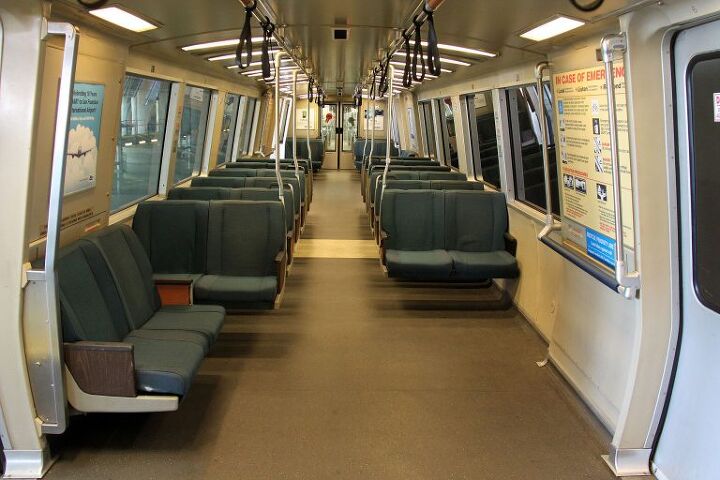Another Reason To Avoid Mass Transit: Flash Mobs Of 'Teens' Attacking Families

Here’s the good news if you own a car in San Francisco or Oakland: property crime is down by a bit compared to last year. Furthermore, there’s a new “auto burglary task force” to increase the chances that your car isn’t going to disappear overnight.
Here’s the bad news: You might want to consider using that car instead of mass transit to commute to your job or to go out in the evenings.
On April 22, a “flash mob” of between 40 and 60 people identified by the media as “teens” performed a coordinated mass robbery and assault on the occupants of a BART train in Oakland, focusing their violent attention on a particular family. They blocked doors, assaulted passengers, took everything they wanted, and vacated the scene — in just a minute or two. A transit police unit in the parking lot responded about five minutes after the attack, but that was at least 180 seconds too late.
As the saying goes: “When seconds count, the police are only minutes away.”
A review of camera footage in the area has resulted in one arrest, but would-be BART users all around the Bay Area have to be asking themselves: Is this likely to happen again? And will this sort of vulnerability prevent commuters from making the switch to mass transit in the future?
Perhaps a better question would be: “Why hasn’t this happened more often?” The so-called “flash mob,” facilitated by easy access to social media and a general aimlessness on the part of younger people on the bottom of the socioeconomic food chain, has made appearances all over the country lately. The Oakland incident simply represents the most refined iteration of the idea so far, combining all the below advantages:
- Sun Tzu’s approach to attack. Commuters on a train are, by definition, usually solitary people with no group affiliation. It’s easy to outnumber and overpower them. Be strong where the enemy is weak. They’re also doing this in California, a state with strong restrictions on personal defense. We don’t have a lot of commuter trains in Ohio, but it’s very probable some nontrivial percentage of the people on a train would be armed and spoiling for a fight if we did have them here.
- Predator satiation. This technique is used all the time in the animal kingdom. With 40 to 60 people attacking the train, even if there happens to be a cop in the immediate vicinity, the chances of one particular individual being apprehended are very slim. In fact, they can be calculated: one in 40 to 60. It’s even true after the fact; do you really think that the cops are going to arrest each one of these “teens”? Of course not. They’ll arrest a few of them, slap them on the wrist, and ignore the rest.
- Careful selection of venue. The Coliseum BART station is deliberately designed to offer multiple avenues of entry and exit and to funnel quickly into the neighborhoods in the vicinity.
The unpleasant fact of the matter is that no transit-police authority in the United States has the ability to truly prevent this sort of thing. One also has to wonder whether an individual transit cop would be particularly motivated to resist a mob attack — particularly in San Francisco, where the alleged abuse of BART riders by transit police has been bit of a cause celebre with the progressive media. If you’re a cop and you see a mob like this approaching, you have two effective choices. Either fire into the crowd to dissuade them, knowing that you have just effectively ruined your life in the course of doing so, or turn and flee, knowing that the worst that will happen is you’ll face some departmental discipline.
If we can’t fix the human factors behind flash mob attacks, can we fix the architectural ones? More effective barriers to station entry, such as full-height turnstiles with remotely controlled locks for entry and exit, would make it more difficult for a mob to assemble — but at the cost of increasing the inconvenience suffered by legitimate users. Something along these lines will eventually have to be done, however, regardless of those consequences. One could also argue mass-transit users should be forced to register for an individual ID, similar to a driver’s license, and that ID should be registered every time the holder enters the BART system at any portal.
In the meantime, however, some commuters are probably re-evaluating their choice to use the BART. My wife, who often works and visits family on the West Coast, happened to be at the Coliseum station the night before the attack. As far as I’m concerned, that’s her last ride on the choo-choo. Similar conversations are probably occurring all over the Bay Area now, albeit with less conventionally patriarchal language.
Supporters of mass transit will no doubt point out that these incidents are statistically rare and that there’s also plenty of risk involved in driving a car in the Bay Area. Both of these statements are true. But those of us who have family using the BART or similar systems are likely to respond in visceral, even illogical, fashion to the thought of those family members being assaulted en masse by a “flash mob.” There’s also the fact that even the overall statistics look worse than they did in the past. If nothing else, this helps make it plain why there is so much interest in driverless cars in that area. Such a vehicle could be armored enough to withstand a minute or two of a flash mob attack. It’s not a perfect solution, but it’s better than being the tasty crab meat inside the BART’s relatively soft shell, isn’t it?

More by Jack Baruth
Latest Car Reviews
Read moreLatest Product Reviews
Read moreRecent Comments
- Jrhurren Worked in Detroit 18 years, live 20 minutes away. Ren Cen is a gem, but a very terrible design inside. I’m surprised GM stuck it out as long as they did there.
- Carson D I thought that this was going to be a comparison of BFGoodrich's different truck tires.
- Tassos Jong-iL North Korea is saving pokemon cards and amibos to buy GM in 10 years, we hope.
- Formula m Same as Ford, withholding billions in development because they want to rearrange the furniture.
- EV-Guy I would care more about the Detroit downtown core. Who else would possibly be able to occupy this space? GM bought this complex - correct? If they can't fill it, how do they find tenants that can? Is the plan to just tear it down and sell to developers?


































Comments
Join the conversation
The problem is that they truly do get slapped on the hand. Harsher punishment for a few caught would go a long way to discourage others. This is a violent crime and should be prosecuted as such regardless of the age Just my opinion though.
Stupid kids, if they had waited for https://en.wikipedia.org/wiki/SantaCon they could have stolen all the presents & had disguises.